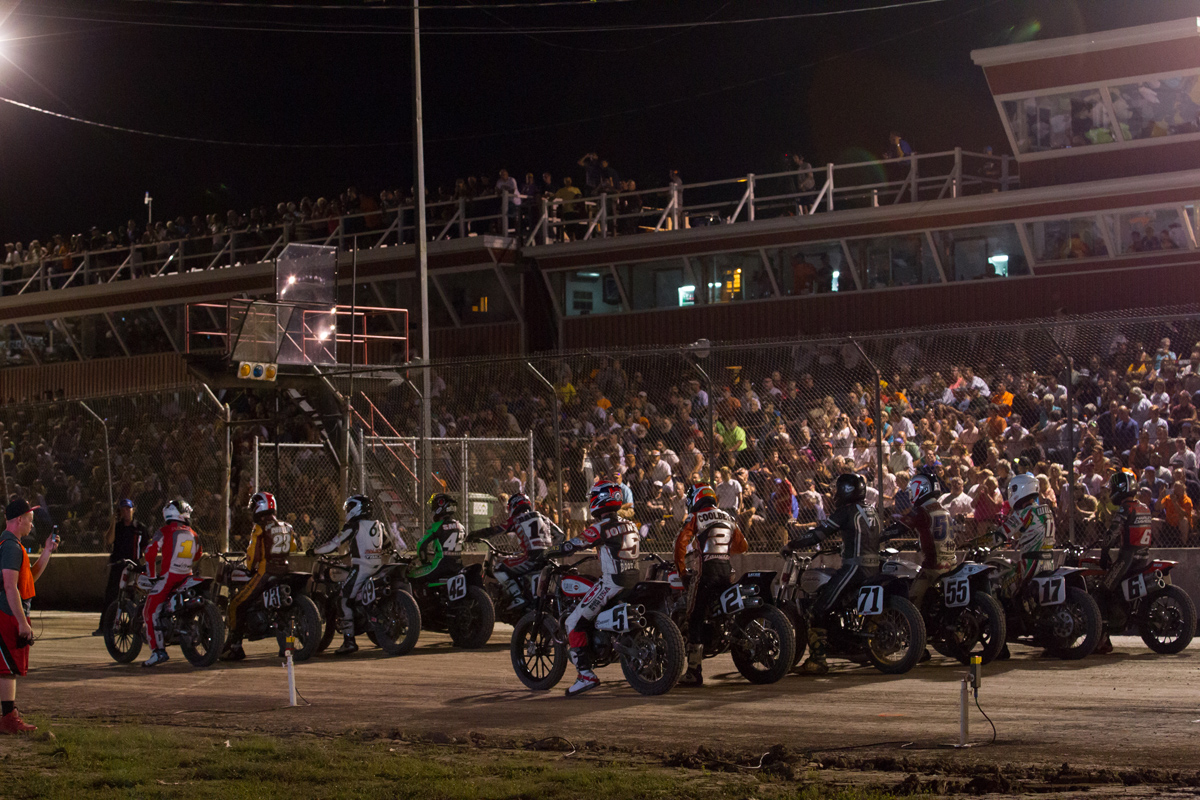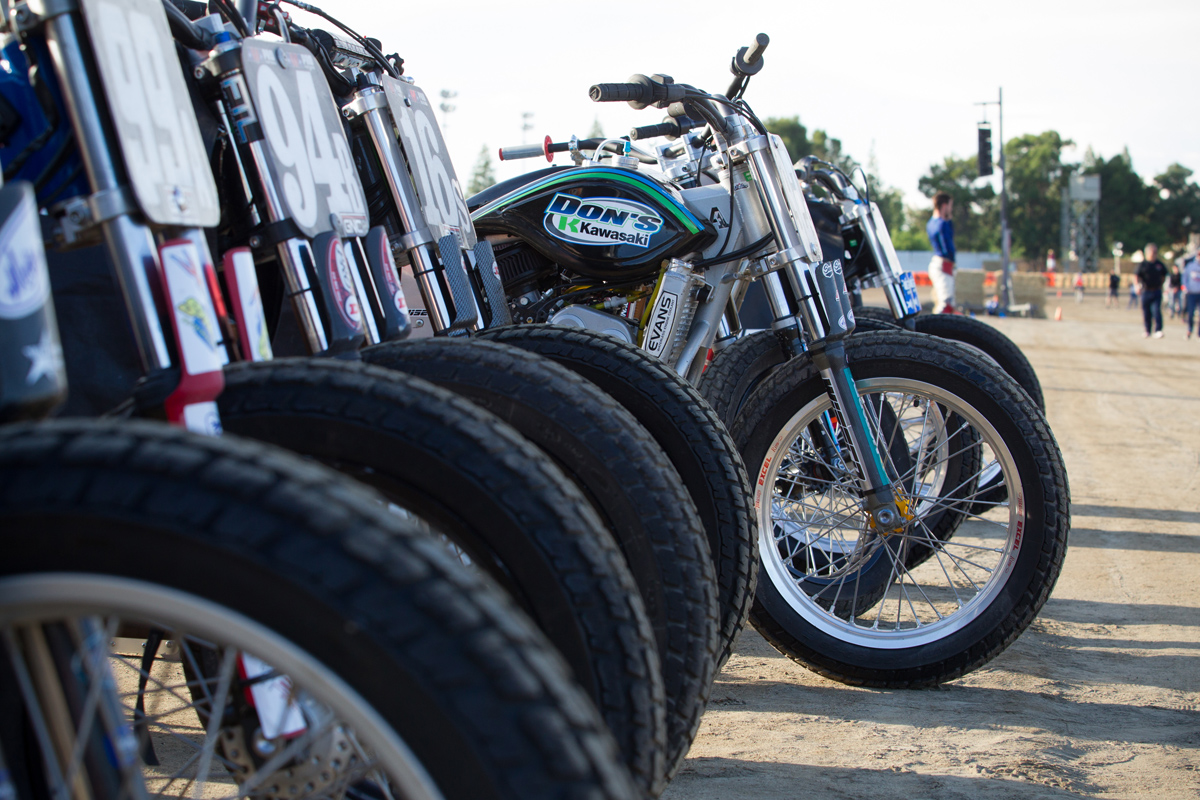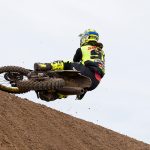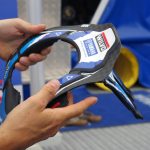Flat track: it’s one of motorcycle racing’s time capsules. From the old, air-cooled Harley-Davidson XR750s that dominated the sport for over 40 years, to the swashbuckling stars comfortable with bar-to-bar action and speeds upwards of 130mph with no front brakes, it’s a sport that transports you back through the ages. For 2017 that ‘capsule’ has been dug up, tidied up and given a new name – American Flat Track. But there’s a lot more to one of the country’s oldest motorcycle racing championships than just a rebrand. So here’s a look at the changes to the game and the sport’s top players before the series kicks off a new era with the season opener at the Daytona TT on March 16.
The start of any new competitive season is always a clean slate but for the American Flat Track Series (formerly AMA Pro Flat Track) it’s more than just setting the counter back to zero. The contest has made some big changes and a big leap forward with an expanded race schedule, a new TV package and new manufacturer involvement.
For a sport that has long been rich in entertainment, but thirsty for dollars, this growth spurt has turned a lot of heads. There’s a lot of anticipation with all this ‘newness’ – a new class structure, a new race format, new rules, new venues and even new machines…and no one’s really sure how it will all play out.

The Game
There have been a lot of changes to the rules for 2017 with the aim to streamline the series and make it easier to understand. Perhaps the most important is the class restructuring to an all-twins premier class (AFT Twins) and all-singles support class (AFT Singles).
For years the differences between the premier and support class was muddled when it came to machinery. The coveted Grand National Championship has a variety of tracks – miles, half-miles, short tracks, TTs (and back in the day, closed course road race circuits) – so the sport evolved to break out the best tool in the shed to suit whichever track. Singles were clearly best suited for short track and TTs and Twins are most appropriate for the big tracks.
The problem with that formula was illustrated recently with Brad Baker and Jared Mees winning a Grand National Championship that neither Harley or Honda could claim, or more embarrassingly so when Mees clinched his title in 2015 in Las Vegas on short track racing a Honda CRF450R when his title sponsors were Las Vegas Harley-Davidson.
So now a twins manufacturer can whole heartedly claim a Grand National Championship win again and for the first time in 20 years they will be racing twins on a TT track.
There’s also a change to the race format. Instead of the traditional process to advance to the Main with Heats, Semis and LCQs; American Flat Track has moved to a tournament style elimination process. After the Heats, riders get one last shot to advance to the Main through the LCQ, but you have to make it through the Semis to get a shot at the win.

New Bikes, Old Rivalries
All of these changes have sparked a new rivalry in town, or rather the return of an old rivalry of the homegrown nature, two iconic American brands – Harley-Davidson and Indian Motorcycles. So for the first time in memory there will be six factory riders in the Grand National Championship, one of America’s oldest motorcycle racing competitions dating back to the 1950s.
Indian swung first, taking three of sports biggest names: defending Grand National Champion Bryan Smith, three-time Grand National Champion Jared Mees and 2013 Grand National Champion Brad Baker. Harley-Davidson signed three top riders as well: veteran Kenny Coolbeth, Jr. with three Grand National titles to his resume, Jake Johnson who has two of his own, and up-and-coming rider Brandon Robinson.
While it’s the usual suspects with the factory rides there is a sense of the ‘unknown’ with both squads fielding unproven machinery. Harley-Davidson has gone all-in with its new age flat tracker, the XG750R, a liquid-cooled fuel-injected 750cc machine to go up against Indian’s liquid-cooled fuel-injected Scout FTR750. Harley made the move towards the future with its modern production-based engine instead of staying within their comfort zone of the old XR750 that, despite of being long of tooth, still wins races.
Although the championship doesn’t let its American-ness sneak up on you, it has got international flavor as well with European and Japanese OEM interest. Yamaha has dipped its toe in by developing an FZ-07 flat track racer and in the singles class it’s all international until an American OEM starts building a competitive 450 single. But for right now, Harley and Indian are undoubtedly the main players and both have approached it differently.
The Dream Team
In the world of flat track racing, Indian Motorcycle stepped in and picked up the dream team – Smith, Mees, Baker. But as the name team suggests, it’s not just about the riders. Indian also picked up the sports top technical personnel – legendary tuner Kenny Tolbert and new age tuner Ricky Howerton. Tolbert is the winningest specialist in the history of the sport with 10 Grand National Championships (seven with Chris Carr and three with Mees). Tolbert and Mees look to carry their success on the old Harley XR750s to the Indian Scout FTR750; a dream team within a dream team.
Howerton in contrast is a newbie. He stepped into the scene in 2012 and turned a lot of heads with his tricked out Kawasaki that gave the old school flat trackers a run for their money with Mile-specialist Smith at the controls. Again, Howerton and Smith, was a dream combo in itself. And now they have a fresh kid added to the squad – Baker, who has a Grand National Championship of his own and has made a name for himself at home and abroad as one of the sport’s biggest rising stars. It’s a powerhouse line-up, that could go very well or horribly wrong.
To read the rest of the article simply click HERE
Photography Courtesy of American Flat Track/ Brian J. Nelson and Andrea Wilson








